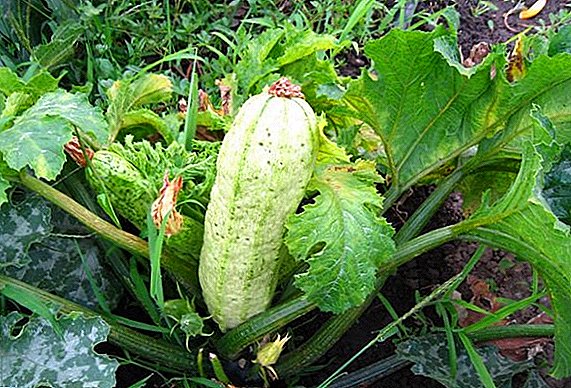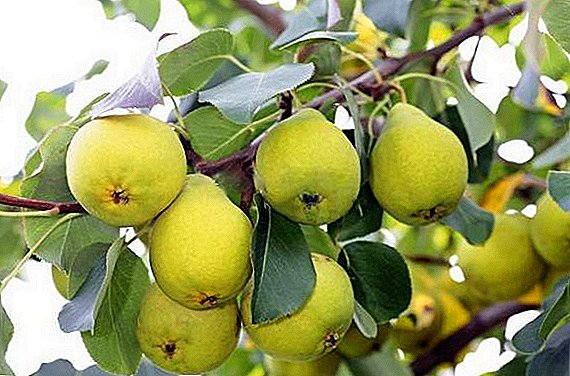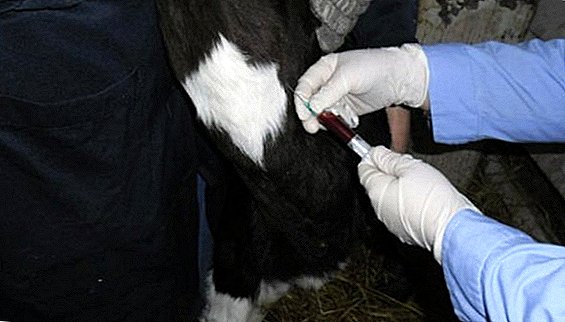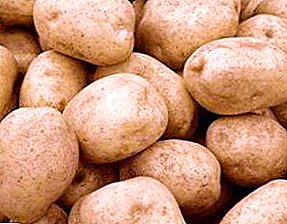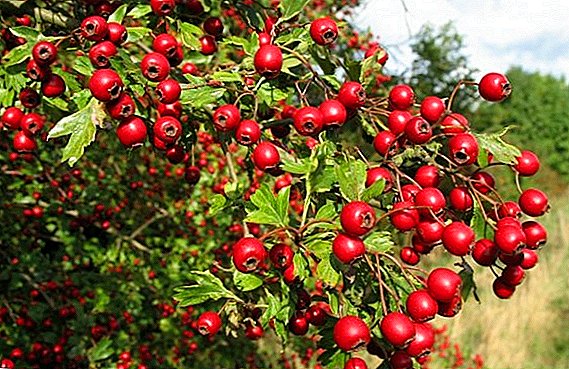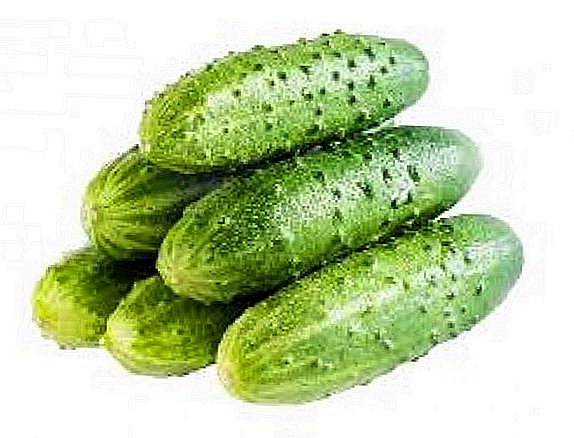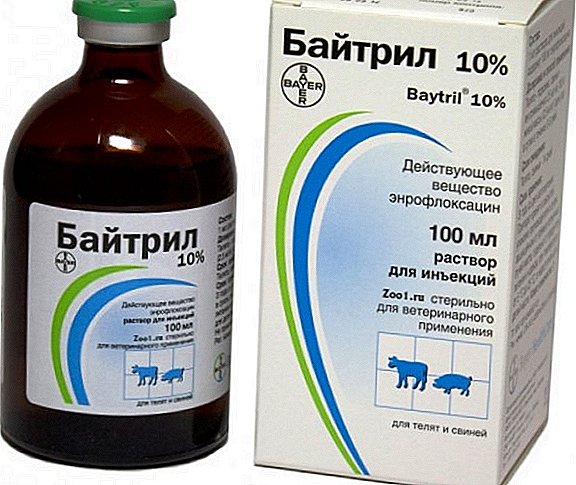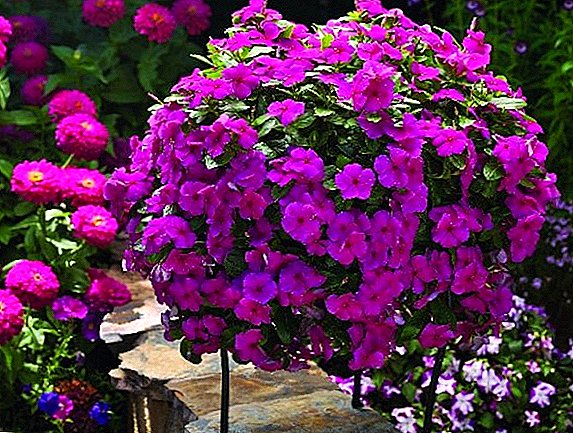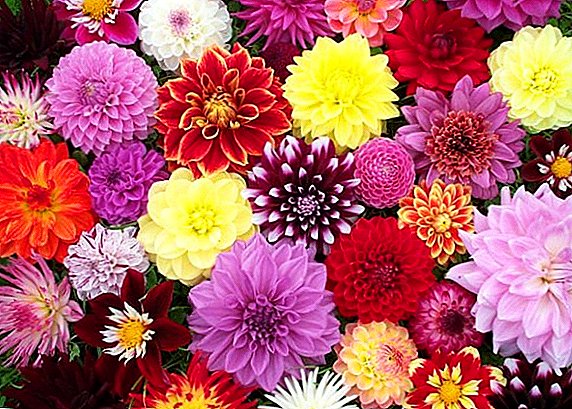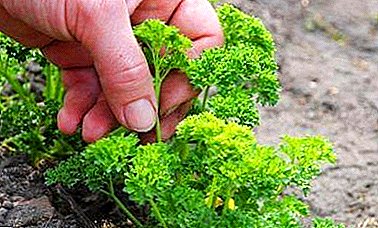
Parsley - very useful and not whimsical in growing greens. Absorbing nutrients from the soil, it reproduces various vitamins, minerals, phytoncides.
In order to create ideal conditions for the growth of greenery, it is enough to know how to properly fertilize the soil and how to feed for growth after winter.
From this article you will learn how to feed parsley and what time it especially needs it. And also from what it is possible to prepare the fertilizer independently and with what the non-observance of the dosage when feeding this plant can threaten
Why so important?
Plant nutrition is required:
- for its proper growth and development;
- strengthen the root system;
- forming sheet apparatus;
- maintaining water balance;
- immunity strengthening;
- disease prevention.
Particularly in need of nutrient enrichment, the soil used for growing greens in pots or greenhouses, because the reserves of macro-and microelements in the soil sooner or later run out. So, parsley needs:
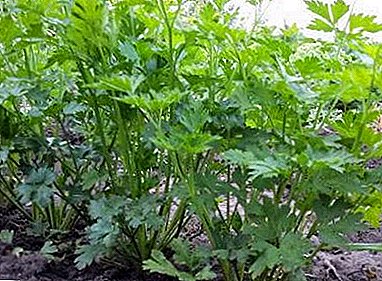 potassium;
potassium;- nitrogen;
- calcium;
- phosphorus;
- magnesium;
- iron;
- manganese;
- copper;
- molybdenum;
- zinc;
- boron.
For leaf and root parsley, there is a slight difference in fertilizer.: root greens can not be grown using organic fertilizer, it is fraught with a change in taste and separation of the roots.
When especially needs fertilizer?
In order to get healthy and tasty greens, it is necessary to fertilize parsley throughout the growing season; It is also necessary to prepare the soil before planting. If the plant grows poorly and becomes sluggish, the leaves turn yellow or fall off, you can make additional feeding.
Important! You can not feed the plant in case of illness, it is recommended to first find out the cause and eliminate it.
Top dressing before and after planting - what's the difference?
In the autumn, the soil is fed up in order to prepare it for the new season, because during the winter period the soil is resting, useful components have time to recycle. It is enough to dig up the ground and add about 5 kg / m² of humus.
In the spring, a thorough preparation begins before planting - it is necessary to fertilize the soil with complex mineral fertilizers. Saltpeter is added for growing parsley leaves, phosphorus-potassium fertilizers for root varieties.
How and what to fertilize: step by step instructions
Fertilizer consumption rates, depending on the manufacturer, will be different.. Consider the general norms of the amount of fertilizer in different seasonal periods.
In the spring
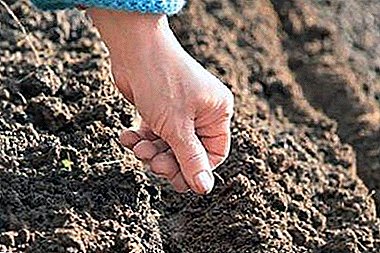 Fertilizers lay in the ranks.
Fertilizers lay in the ranks.- Next, pour about 2 cm of soil.
- Seeds are sown from above.
- Fertilizers can also be added to the additional furrows that are located no closer than 2 cm from the main furrow with seeds.
In the spring use several types of fertilizers:
- Superphosphate - phosphorus-nitrogen complex, which helps the growth and development of the root, stem and leaves of the plant and provides protection against many diseases.
Attention! Superphosphates can not be used simultaneously with urea, ammonium nitrate and lime, as they neutralize the beneficial properties of fertilizer.
Regardless of the season, the rate of fertilizer consumption remains the same - 40-50 g / m² for cultivated land, and 55-70 g / m² - for those already involved in the crop rotation (recommended dosage for continuous application).
- Nitrogen fertilizers - ammonium sulphate in granules (25-30 g / m²), beds pre-dig, then watered with ammonium sulphate solution; after the seeds are planted. Top dressing is done once.
- Ammonium nitrate - the dosage is calculated depending on the condition of the soil. If it is depleted, 35–50 g / m² is recommended; 20-30 g / m² is sufficient for cultivated soil. When the first shoots appear, they fertilize at the rate of 10 g / m²; two weeks later, supplementation is repeated 5-6 g / m².
- In order to form a rich leaf parsley, you can feed from 15 g of superphosphate, 35 g of ammonium nitrate, 10 g of potassium sulfate.
- In addition to the above, in the spring you can use compound fertilizers with the participation of the whole complex (from nitrogen, potassium and phosphorus):
- ammophos 15-25 g / m²;
- diammonium phosphate grade B 15-25 g / m²;
- fertilizer nitrogen-phosphorus-potassium NPK-1 brand 25-30 g / m².
Summer
Top dressing of parsley in the summer is required periodically throughout the entire active growth.
- Root top dressing. 1 dressing (nitrogen, phosphorus and potassium):
- ammonium nitrate brand B 20-30 g per 10 l of water / m²;
- granulated superphosphate 15-20 g / m²;
- Kalimagnezia 20-25 g / m².
Fertilizers are applied after cutting the greens. Then you can use molybdenum, manganese micronutrients.
 Foliar feedings:
Foliar feedings:- 4-water calcium nitrate 15-20 g per 10 l of water;
- carbamide grade B 30-60 g per 10 liters of water (recommended only for leaf grade).
Feed out 4 times with an interval of 2-3 weeks.
- Microfertilizers are used:
- copper;
- zinc;
- boric;
- molybdenum;
- iodide;
- manganese.
In the autumn
Parsley is well susceptible to organic fertilizers. (except root variety). They can be worn for leaf parsley both in autumn and spring - compost or humus at the rate of 4-5 kg / m². Manure is recommended to make only in the fall. Under the autumn digging produce fertilizing the soil with mineral fertilizers:
- superphosphate 40-50 g / m²;
- Kalmagnezia 30-40 g / m².
Superphosphate rushes into the soil in late autumn after full harvest, so that the phosphorus can digest the soil over the winter. You can not just scatter fertilizer on the ground, otherwise it will just wash away the rain; superphosphate should be located in the ground itself, near the roots of plants.
In winter, only parsley grown at home or in industrial greenhouses needs top dressing. You can navigate to the summer method of feeding.
Home remedies
In addition to store fertilizers, dressing can be prepared independently from nettle:
- For the preparation of nettle infusion is necessary to collect the young shoots of nettle (without seeds).
- Place in a large container (fill half) and not completely fill it with water.
- Close tightly with a lid, infuse for several weeks.
- Dilute the obtained dark liquid (without bubbles) with water 1:20 and spray the parsley.
This dressing protects parsley from pests and diseases, nourishes the plants and heals the soil.
Why is it important to comply with the dosage?
It is very important that the dosing of fertilizers is strictly observed, otherwise the plant may adversely respond to surplus / nutrient deficiencies. With a lack or complete absence of fertilizer, the plant shows the following signs:
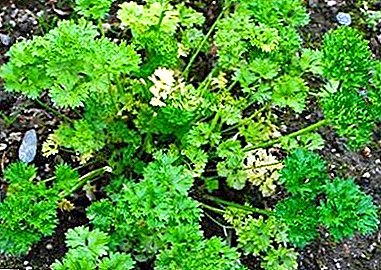 slower plant growth (nitrogen, manganese, molybdenum, boron);
slower plant growth (nitrogen, manganese, molybdenum, boron);- branch thinning (nitrogen, manganese);
- decrease in leaf brightness, yellowness (nitrogen, potassium, magnesium, iron);
- decrease in leaves juiciness (phosphorus, molybdenum);
- the appearance of brown spots (calcium);
- drying leaves (phosphorus);
- chlorosis (nitrogen, magnesium);
- light spots on the leaves, dying off the tops (copper, zinc).
When there is an excess of fertilizers,:
- fungal diseases, chlorosis (nitrogen, calcium);
- weakening of the plant (nitrogen, calcium);
- growth retardation (potassium, copper);
- excessive growth with thinning of the leaves and the stem (phosphorus);
- weakening of the root system (magnesium, copper);
- leaf fall (iron, zinc, boron);
- brown spots (manganese, copper, boron);
- light spots on the leaves (molybdenum).
In most cases, with proper recognition of the cause of a symptom in a plant, it is enough to remove / add the necessary nutrient.
With proper care, parsley will surely give a rich and fragrant harvest. It is enough to remember the main rule: it is better to “underfeed” the plant than to “overfeed”. If, with a small lack of top dressing, parsley only loses a small portion of nutrients, then with an excess of fertilizers, it is possible to harm human health and the environment.


 potassium;
potassium; Fertilizers lay in the ranks.
Fertilizers lay in the ranks. Foliar feedings:
Foliar feedings: slower plant growth (nitrogen, manganese, molybdenum, boron);
slower plant growth (nitrogen, manganese, molybdenum, boron);